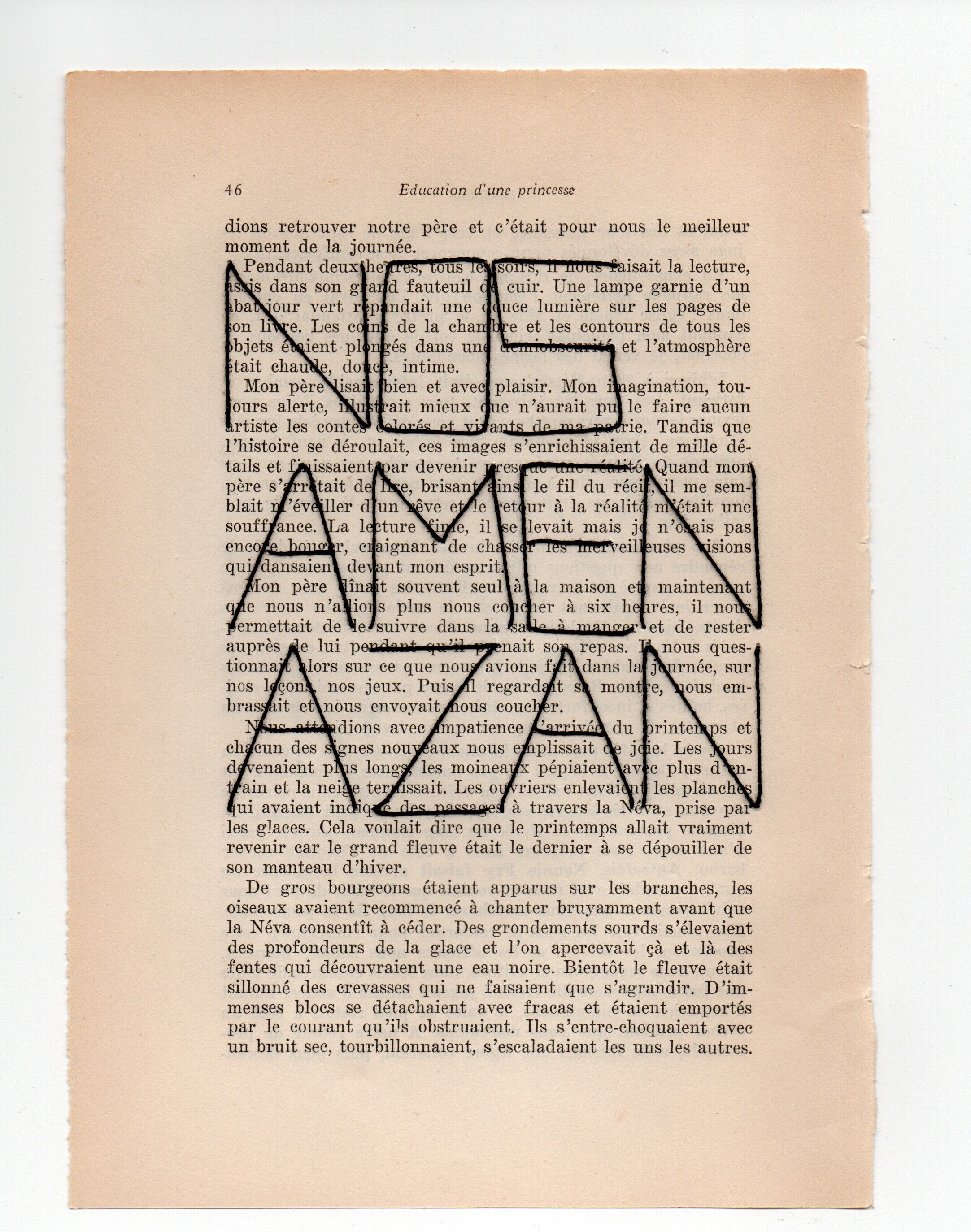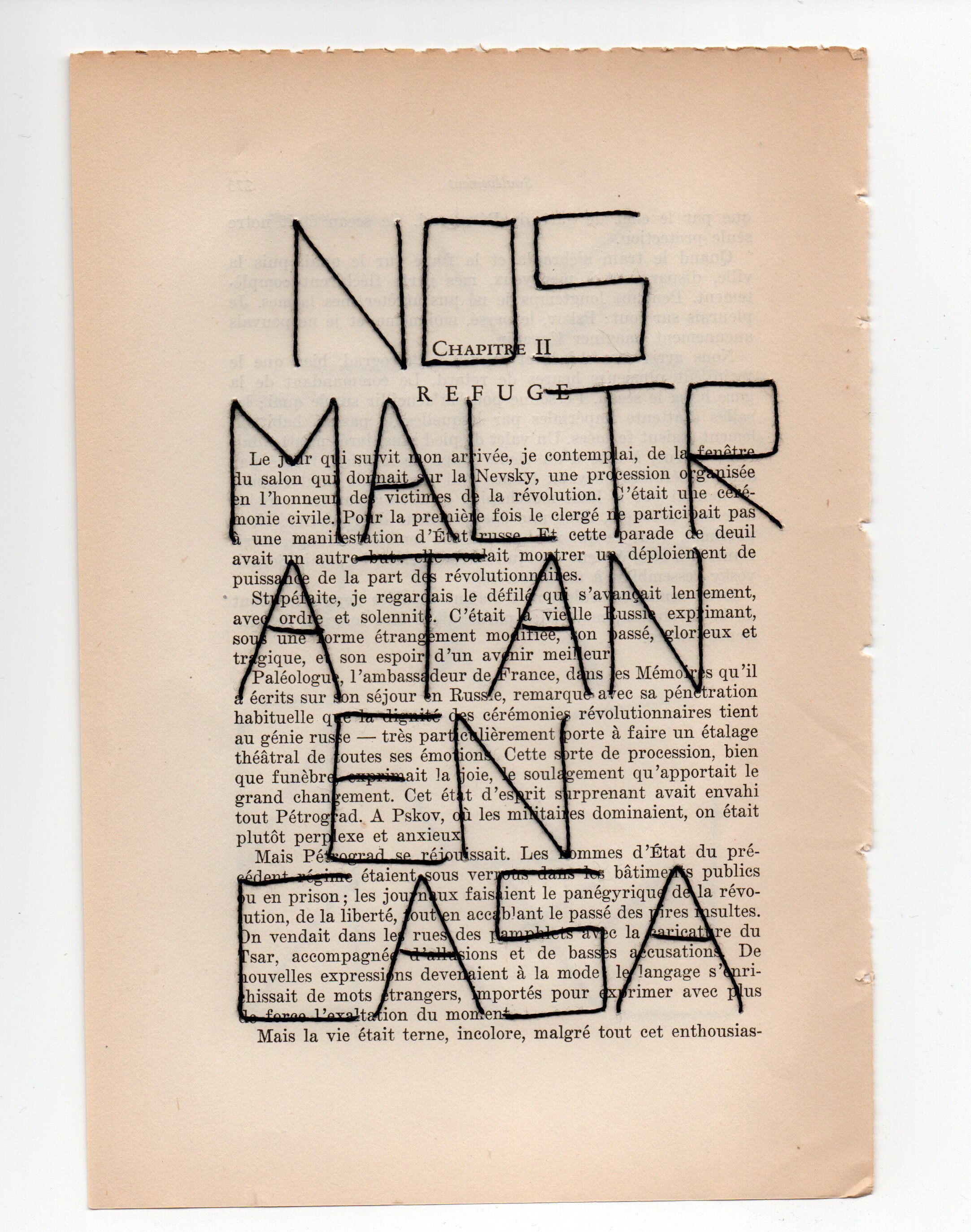Drowning Flowers, por Elvira Smeke
5 de diciembre 2020
Texto curatorial
La era moderna afianzó el patriarcado a través del modelo jurídico y simbólico, es decir, de la organización política y cultural de nuestras sociedades; confinando el rol de la mujer a tareas domésticas y sin derechos igualitarios a los hombres. Sin embargo, fue también, la época en que comenzó a configurarse el pensamiento feminista, entre ellas se encuentran Clarice Lispector (Brasil 1920 – 1977), Simone de Beauvoir (Francia, 1908-1986) hasta llegar a Judith Butler (EU, 1956), entre muchas más.
A partir de la literatura de estas tres intelectuales, Elvira Smeke (Ciudad de México, 1978) generó una cartografía de objetos cotidianos que pretenden, por un lado, generar diversas reflexiones sobre el rol de la mujer en nuestra era contemporánea que sigue siendo sometida a diversas violencias que van desde la psicológica hasta los feminicidios. Y por otro lado, Smeke emplaza la idea de ecología como metáfora de un orden y equilibrio que debe existir entre mujeres y hombres que puede buscarse desde el gozo.
Recordemos que en México diariamente son asesinadas siete mujeres por odio, además de todas las mujeres que son violentadas en sus hogares, de manera psicológica y física, sin que podamos tener un recuento exacto de los daños. Es a partir de la educación de las niñas y los niños en el hogar donde podemos prevenir la violencia en contra de las mujeres, recordando, que somos la agua viva, como intitula la escritora brasileña Clarice Lispector a su libro publicado en 1973.
Octavio Avendaño Trujillo
Curatorial text
The modern era strengthened patriarchy through the legal and symbolic model, that is, the political and cultural organization of our societies; confining the role of women to domestic tasks and without equal rights to men. However, it was also the time when feminist thought began to take shape, among them are Clarice Lispector (Brazil 1920 - 1977), Simone de Beauvoir (France, 1908-1986) until reaching Judith Butler (USA, 1956) , among many more.
From the literature of these three intellectuals, Elvira Smeke (Mexico City, 1978) generated a cartography of everyday objects that seek, on the one hand, to generate various reflections on the role of women in our contemporary era that continues to be subjected to various types of violence ranging from psychological to femicides. And on the other hand, Smeke uses the idea of ecology as a metaphor for an order and balance that must exist between women and men that can be sought from joy.
Let us remember that in Mexico seven women are killed every day out of hatred, in addition to all the women who are violated in their homes, psychologically and physically, without being able to have an exact count of the damages. It is through the education of girls and boys at home that we can prevent violence against women, remembering that we are living water, as the Brazilian writer Clarice Lispector entitled her book published in 1973.
Octavio Avendaño Trujillo
Un azote, 2017. Impresión lightjet sobre papel fotográfico, 100 x 66 cm
Azotes, 2016, (Still) Video performance, Duración 8:37 min
El lavadero, 2016, Lavadero original extraído de escena de crímen de feminicidio, papel, pintura acrílica, mecate y hojas de árbol Dimensiones variables
El lavadero, detalle
Terrenos olvidados, 2015, Impresión lightjet sobre vidrio
Terrenos olvidados, 2015, Impresión lightjet sobre vidrio
Terrenos olvidados, 2015, Impresión lightjet sobre vidrio
NOS USAN, 2020, Hojas de libro, hilo de algodón 8 piezas de 31 x 37 cm c/u. MIA Art Collection, Alejandra Castro Rioseco (Dubai)
NOS USAN, 2020, Hojas de libro, hilo de algodón 8 piezas de 31 x 37 cm c/u. MIA Art Collection, Alejandra Castro Rioseco (Dubai)
NOS USAN, 2020, Hojas de libro, hilo de algodón 8 piezas de 31 x 37 cm c/u. MIA Art Collection, Alejandra Castro Rioseco (Dubai)
NOS USAN, 2020, Hojas de libro, hilo de algodón 8 piezas de 31 x 37 cm c/u. MIA Art Collection, Alejandra Castro Rioseco (Dubai)
NOS USAN, 2020, Hojas de libro, hilo de algodón 8 piezas de 31 x 37 cm c/u. MIA Art Collection, Alejandra Castro Rioseco (Dubai)
NOS USAN, 2020, Hojas de libro, hilo de algodón 8 piezas de 31 x 37 cm c/u. MIA Art Collection, Alejandra Castro Rioseco (Dubai)
Vacíos heredados, 2017, Impresión lightjet sobre papel algodón Hahnemühle, 9 piezas de 8” x 10” cada una
Vacíos heredados, 2017, Impresión lightjet sobre papel algodón Hahnemühle, 9 piezas de 8” x 10” cada una
Vacíos heredados, 2017, Impresión lightjet sobre papel algodón Hahnemühle, 9 piezas de 8” x 10” cada una
Drowning flowers, 2017, Video digital, 12:36 min
Video parte de mi exposición YO SOY ANTES, YO SOY CASI, YO SOY NUNCA en Museo de Arte de Sonora MUSAS en 2017. Está hecho con cristalería heredada desde mis tatarabuelas y flores. El agua y las flores simbolizan nuevas mujeres con nuevas ideologías.
El gozo de ser niña, 2018, Técnica mixta, hojas naturales, hilo de algodón, rama natural, 100 x 100 cm. Colección privada (México)
El gozo de ser mujer, 2017, Técnica mixta, hojas naturales, hilo de algodón, rama natural, 120 x 120 cm
La búsqueda, 2017, Impresión lightjet, sobre papel fotográfico, 5 piezas de 80 x 53 cm cada una
La búsqueda
Haiku natural 2017, Técnica mixta, hojas naturales, pintura acrílica, haiku de mujeres japonesas del Siglo XVI-XVII, 120 x 100 cm
365 hojas, 365 mujeres, 2017 Instalación 365 hojas de árbol bordadas, hilo de algodón Dimensiones variables
365 hojas 365 mujeres, detalle
Pop tears, 2017, (Detalle) Papel impreso, máquina de escribir Dimensiones variables
Pop tears, 2017, (Detalle) Papel impreso, máquina de escribir Dimensiones variables
Construyendo una identidad, 2017, Impresión lightjet sobre papel fotográfico, emulsión en acrílico, 120 x 90 cm
Blanco puro, 2017, Impresión lightjet sobre papel fotográfico, 100 x 66 cm
Quiero poseer los átomos del tiempo, 2017, Impresión digital sobre papel fotográfico, 20” x 16”
Sed de inmortalidad, 2019. Hojas de libro, hojas naturales, hilo de algodón, 17 x 24 cm c/u, 6 piezas. Fundación Otazu (España)
Agua viva, un homenaje a Clarice Lispector, 2017, Técnica mixta, hojas de árbol, máquina de escribir, papel. Dimensiones variables
Agua viva, detalle
Everybody, Somebody, Anybody, Nobody, 2017. Video digital, 00:07 min
A partir de 4 pronombres indefinidos: everybody, somebody, anybody, nobody, vemos la importancia de la palabra. Estos son ambiguos, es decir, no se sabe el nombre ni el género de la gente incluida en estas palabras y se va reduciendo desde todos, o todo el mundo, hasta nadie. Es la desaparición de la diferencia de género, pero haciendo un énfasis en la palabra body, ya que, por lo general, es el cuerpo, en específico, los genitales los que nos denominan como mujer u hombre. En vez de utilizar la máquina de escribir, está hecho en computadora, ya que el problema de género es muy actual.
From 4 indefinite pronouns: everybody, somebody, anybody, nobody, we see the importance of the word. These are ambiguous, that is, the name or gender of the people included in these words is not known and it is reduced from everyone, or everyone, to no one. It is the disappearance of the gender difference, but with an emphasis on the word body, since, in general, it is the body, specifically, the genitals that refer to us as a woman or a man. Instead of using the typewriter, it is done on a computer, since the gender problem is very current.
Biografía de Elvira Smeke
Elvira Smeke (México, 1978) es una artista que tuvo su formación como fotógrafa e historiadora del arte. Actualmente es una artista multidisciplinaria que explora la escultura, la pintura, el dibujo, la instalación, la fotografía, el video y el arte-objeto. Sus materiales son objetos domésticos de uso cotidiano, así como materiales de recuperación como son las hojas de árbol y piedras. También utiliza objetos delicados como el encaje y los combina con materiales que son esencialmente utilizados por los varones, creando una tensión entre éstos y una fusión armoniosa.
La ruta crítica de la obra de Smeke se articula desde la filosofía feminista, principalmente de Simone de Beauvoir y Hélène Cixous y la problemática de género planteada por Judith Butler. Asimismo, tiene acercamiento a la literatura, el uso del lenguaje y la escritura. Su obra también tiene un aspecto ecológico, de respeto a la naturaleza e inclinada a la filosofía del Antropoceno que busca equidad entre todos los seres, logrando un total equilibrio.
Smeke hace un análisis de lo qué es ser mujer en la era contemporánea, retomando ideologías y quehaceres impuestos a la mujer a través de la historia, retomándolos desde el gozo de ser mujer. La otra cara de su obra se basa en la problemática del feminicidio y el sufrimiento de la mujer dentro de una sociedad falogocéntrica. Busca hacer una conciencia sobre esta problemática aun vigente en nuestras sociedades contemporáneas.
Biography of Elvira Smeke
I am an artist trained as an art historian and photographer. I am now currently a multidisciplinary artist exploring sculpture, painting, drawing, installation, photography and video. I like to use everyday materials, specifically objects of domestic use, such as thread, soap and kitchen supplies, as well as found objects such as tree leaves and stones. I also use delicate objects like lace, but combine them with materials that are mainly used by men such as cement and plaster, creating both a tension between them, and also a harmonious fusion.
My work’s critical route hinges on a feminist philosophy, with an important influence from Simone de Beauvoir, Heléne Cixous and the gender issues posed by Judith Butler. In addition, I reach into literature, the use of language and writing. My work also has an ecological facet from the point of view of the anthropocene theory.
I analyze what does it means to be a woman in our contemporary era, evoking ideologies and tasks imposed on women throughout history, but recapturing them from the perspective of the joy of being a woman. My body or work touches on the problematic of feminicide and the suffering of women in a phallogocentric society.
On the other hand, my work is performative. I takes long walks and sometimes collect found objects which I use as a starting point to create, use my own body as a form, use my own life to tell a story and am aware of what I call the accident: which is the uncontrolled resulting part of an action.






























